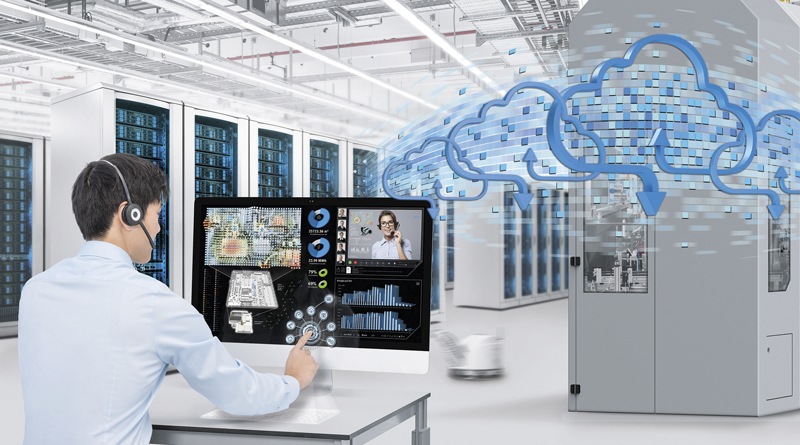Automation Rhymes More and More with Digitization
Finding guidelines to navigate a phase of great changes such as the one which the industrial automation world is going through is the aim of Festo, whose presence at SPS Italia was characterized by four pillars: “Learn”, “Build”, “Operate” and “Inspire”. In this scenario some interesting innovations were introduced, which bring the digital world even closer to pneumatic and electric automation.
di Fabrizio Dalle Nogare
Developing the concept of digitization is not easy. During the last edition of SPS Italia in Parma, however, Festo gave this task a try, defining four pillars, or interpretation levels, of the change which the industrial automation world is undergoing.
The first of these pillars, “Learn”, is relative to the promotion of 4.0 technical training and to the development of digital culture, which Festo is supporting by means of Festo CTE (Consulting, Training, Education). The “Build” phase, dedicated particularly to OEMs, has the ambition of further speeding up the design, commissioning and operation phases thanks to Festo’s innovative products and services.
The “Operate” concept is linked to such keywords as condition monitoring, smart maintenance, energy saving, lean organization and digital supply chain, combined with Festo’s innovative cloud services to develop corporate productivity. Finally, in keeping with tradition, the “Inspire” section hosted the most relevant innovations regarding the Bionic Learning Network and superconductor technology with the Supra Motion program.
From field level to the cloud
Converting what has been said above to concrete solutions, Festo presented the IoT-Gateway CPX-IoT, which connects components and modules at field level such as Festo Motion Terminal, the energy monitoring module, MSE6-E2M, or Festo cloud handling systems by means of the OPC-UA interface. The cloud allows to process and monitor data to derive trend analyses or to set up early alarm systems and automatic notification in case of faults. The IoT-Gateway ensures connection to the cloud of a controller and the communication of relevant information in the desired format and moment. “Information moves from field level to the cloud without going through PLC – Michele Vecerina, Festo’s Application Specialists Manager, sums up -, where it may be easily accessed by means of predefined dashboards. All the data that are on the cloud are stored as historical series for one year, with the possibility of creating graphs, diagrams or to see the historical series to carry out any type of evaluation”.
Online configuration software
As regards design, the Festo Design Tool 3D configuration software may now be used not only in its offline version, but online too on any browser, with no need for local installation. This software cuts down on the risk of errors during design and order of product modules and represents a convenient, reliable and fast tool for the design of actuators complete with accessories in all the most widely used CAD formats.
The system allows to select the products in 3D, to create product combinations fast and automatically and to verify delivery times and price information. Once the configuration is complete, the order process is given a unique identification code for the product modules and the order is inserted directly into the Festo basket.
Motion Terminal, one year later
The presence of the German company at SPS also represented a great occasion to summarise the market’s reaction to the VTEM Motion Terminal, the automation platform presented last year which perfectly combines digitization and pneumatic technology replacing more than 50 hardware components by resorting to Apps. “The VTEM Motion Terminal is a highly technological and innovative product which requires a remarkable effort in providing information to clients. We were very earnest this year in creating a culture around the new solution – Michele Vecerina explained – and the response we received is excellent: we already provided some production machines with the Motion Terminal and clients have shown that they appreciate its advantages, which range from greater cleanliness of plants to the elimination of a series of hardware components, right up to the possibility of managing the apps dynamically directly form the PLC. It is a slow process, and we were aware of this, but we are very pleased with the market’s response”. “Following the first experiences with clients we saw that the Motion Terminal’s advantage is not strictly linked to a specific application – Festo’s Marketing Manager, Marco Orlandi, added -. The possibility of acquiring upgrades immediately via software, for instance, is an important simplification element. The logic is very similar to the one we all know which links smartphones to apps”.

